Planet Mercury | Learn About The Rocky Little Inner Planet
The Mysterious Star Orbiting The Sun!
For thousands of years, humans have often wondered what the faint little star that orbits close to the Sun (so only visible in the early morning and evening skies) was like. Named after the Roman messenger to the gods for its speedy orbit around the Sun, we now know plenty of cool and interesting facts about the Planet Mercury thanks to visits by two very cool little spacecraft!
Cool Fun Facts About The Planet Mercury!
- The Planet Mercury is the smallest of the 8 planets in the Solar System with no known moons.
- With a diameter of only 4,879 km, that makes Mercury smaller than the two moons Ganymede and Titan!
- It is the innermost planet to the Sun and like Venus, it is considered an ‘inferior’ planet as it displays a full range of phases as it completes its orbit relative to the Earth.
- Mercury completes its orbit around the Sun in only 88 days, much faster than the other planets, with an average speed of 47.4 km/s! That’s fast!
- Mercury has a highly eccentric orbit, meaning it is sometime 1.5 times further from the Sun compared to when it is closest.
- On average, every 7 years, the Sun, Mercury and Earth line up and Mercury can be observed transiting across the solar disc only in the months of May or November. The next transit will occur on November 11, 2019, and then not until November 13, 2032!
- Each solar day on the planet Mercury lasts 176 Earth days or exactly two Mercury years! That means a day on Mercury is twice as long as a year – crazy!
- The lack of atmosphere also means Mercury gets very hot during the day, reaching up to 427 °C (800 °F) and very cold during the night -173 °C (-280 °F).
- Despite Mercury being closer to the Sun, it is only the second hottest planet as Venus is even hotter!
- The surface of Mercury is covered in solidified smooth lava and craters of all sizes (just like Earth’s Moon) because the planet has no atmosphere to slow incoming meteors and comets!
- The largest known crater (referred to by planetary scientist as ‘basins’) on the planet Mercury is called the Caloris Basin and is over 1,550 km wide! Wow! Its impact was so powerful that its shock waves travelled to the opposite side of the planet and were preserved in the rocks.
- Shortly after the formation of Mercury, the large hot core began to cool after the surface had hardened. This has resulted in wrinkles up to 2km high (1 mile) and up to 700km long forming along the surface.
- Probably because Mercury has a relatively large core made of dense metals, the planet has a weak magnetic field partially protecting the planet from particles from the solar winds.
- The gravity on the surface of Mercury is 38% of what it is on Earth.
- The axial tilt of Mercury is almost zero meaning that the planet has almost no seasons and the Sun never fully rises above the horizon if viewed from the North or South Pole. This means there are shadows in Mercury’s craters at the poles that never see the sun and hence water ice has been recorded there despite Mercury being the second hottest planet!
- From Earth, the Planet Mercury is very difficult to see and study because it orbits so close to the bright Sun. Thankfully two NASA spacecraft have visited with Mariner 10 flying-by in 1974 and 1975 and then the MESSENGER probe which after several flybys entered orbit in 2011.
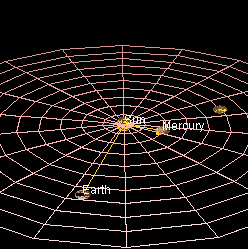
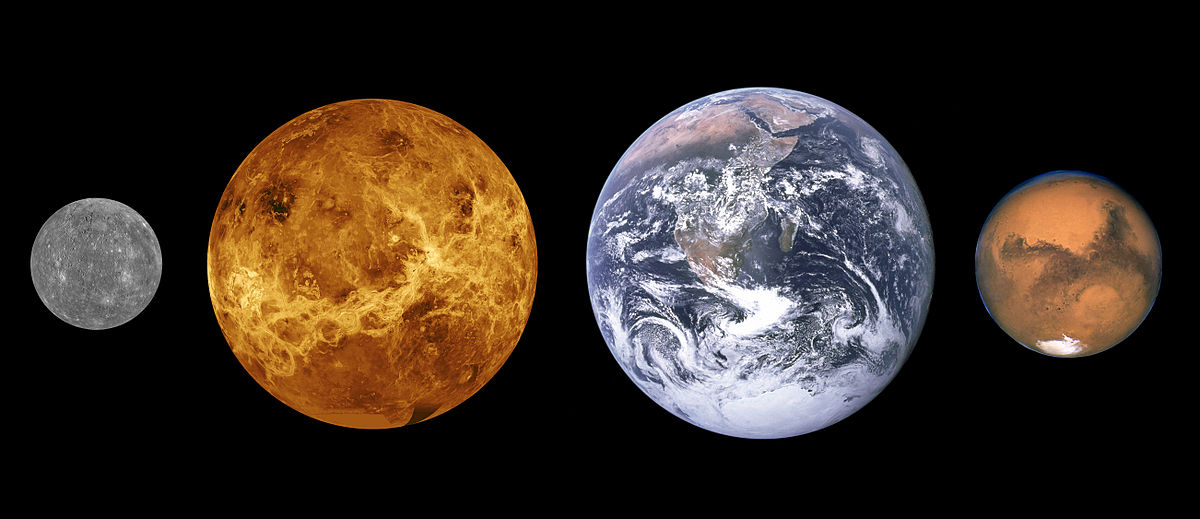
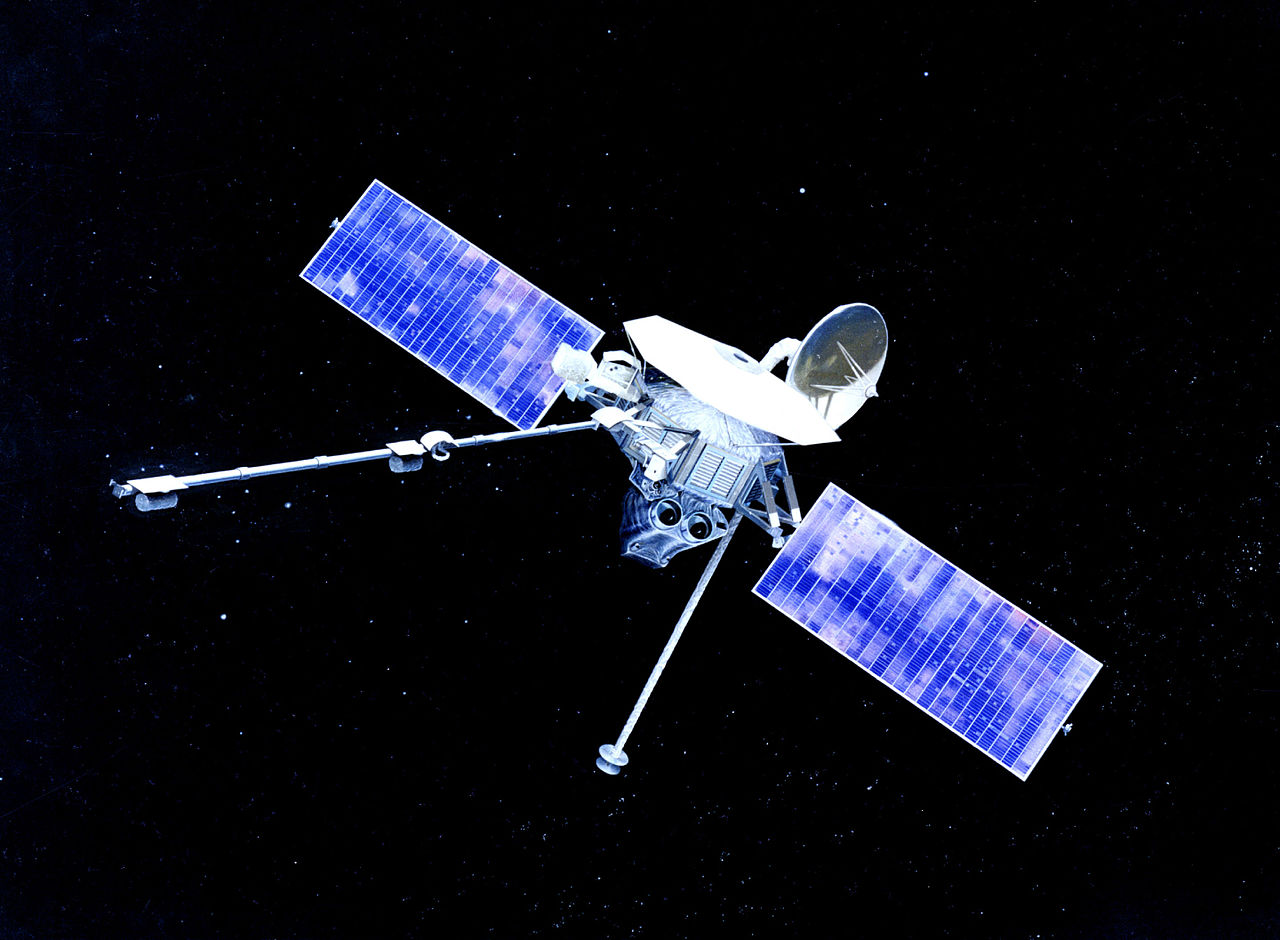
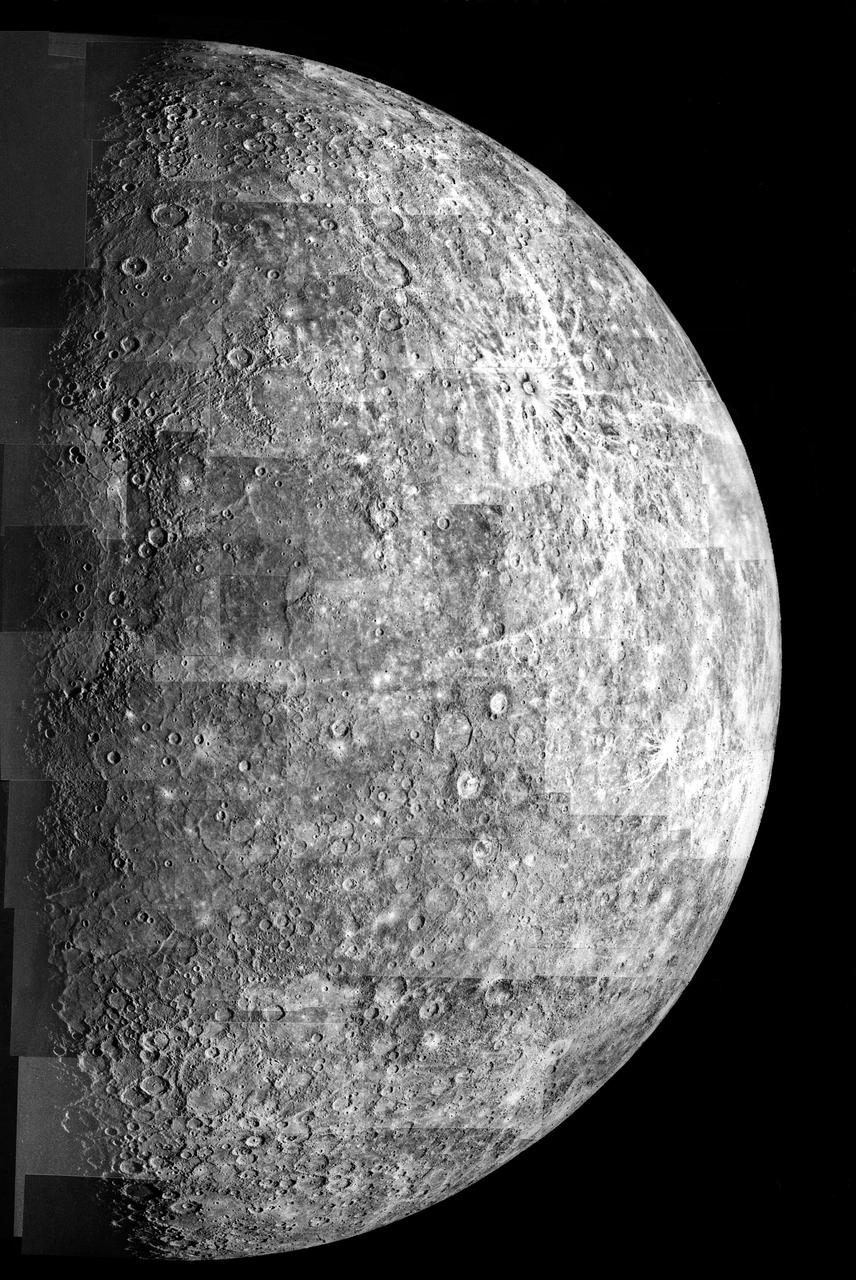
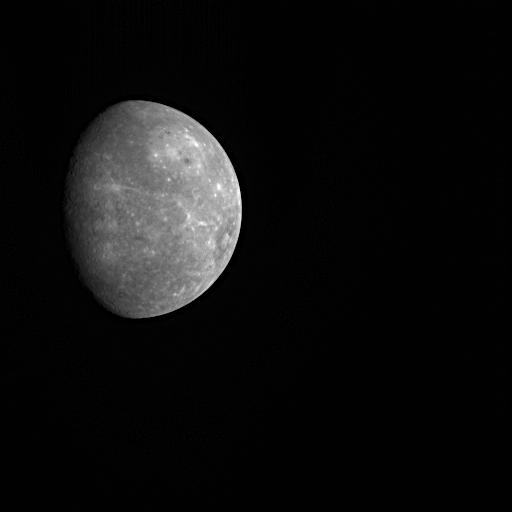
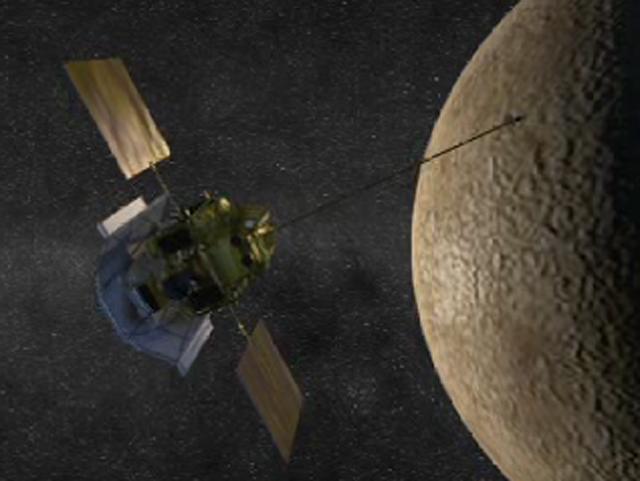
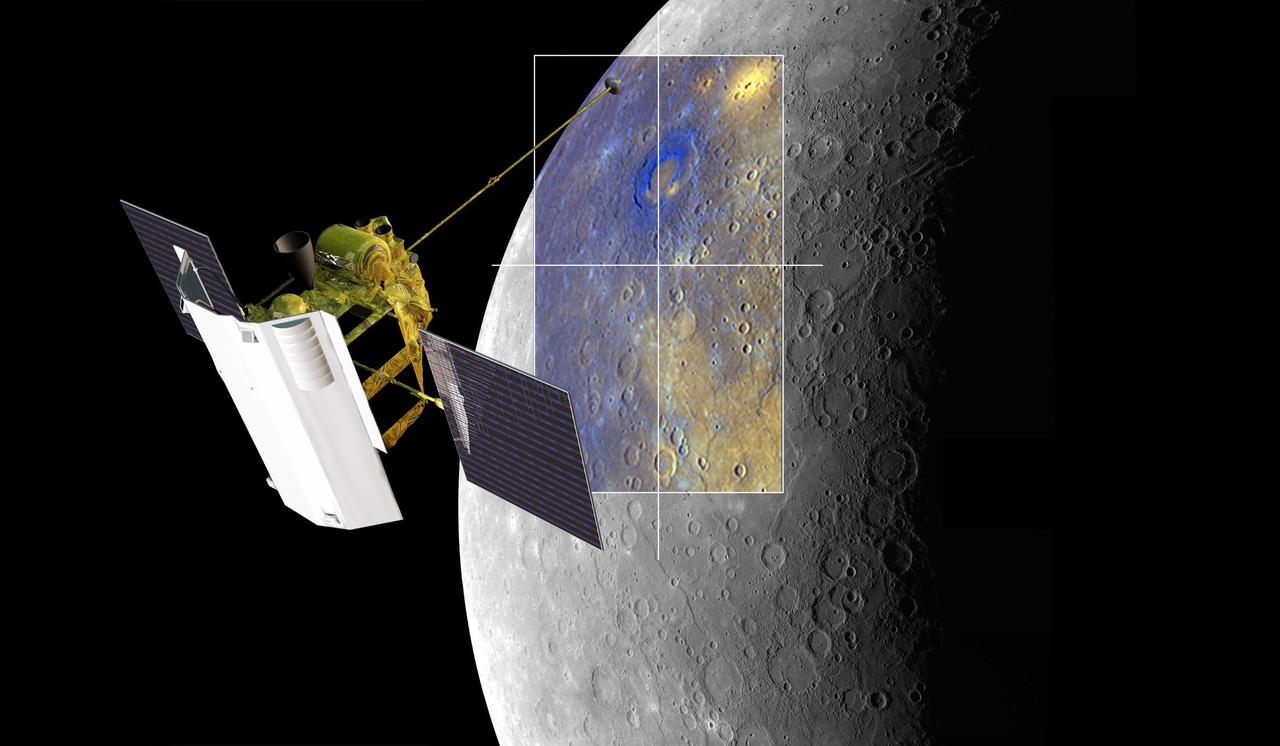
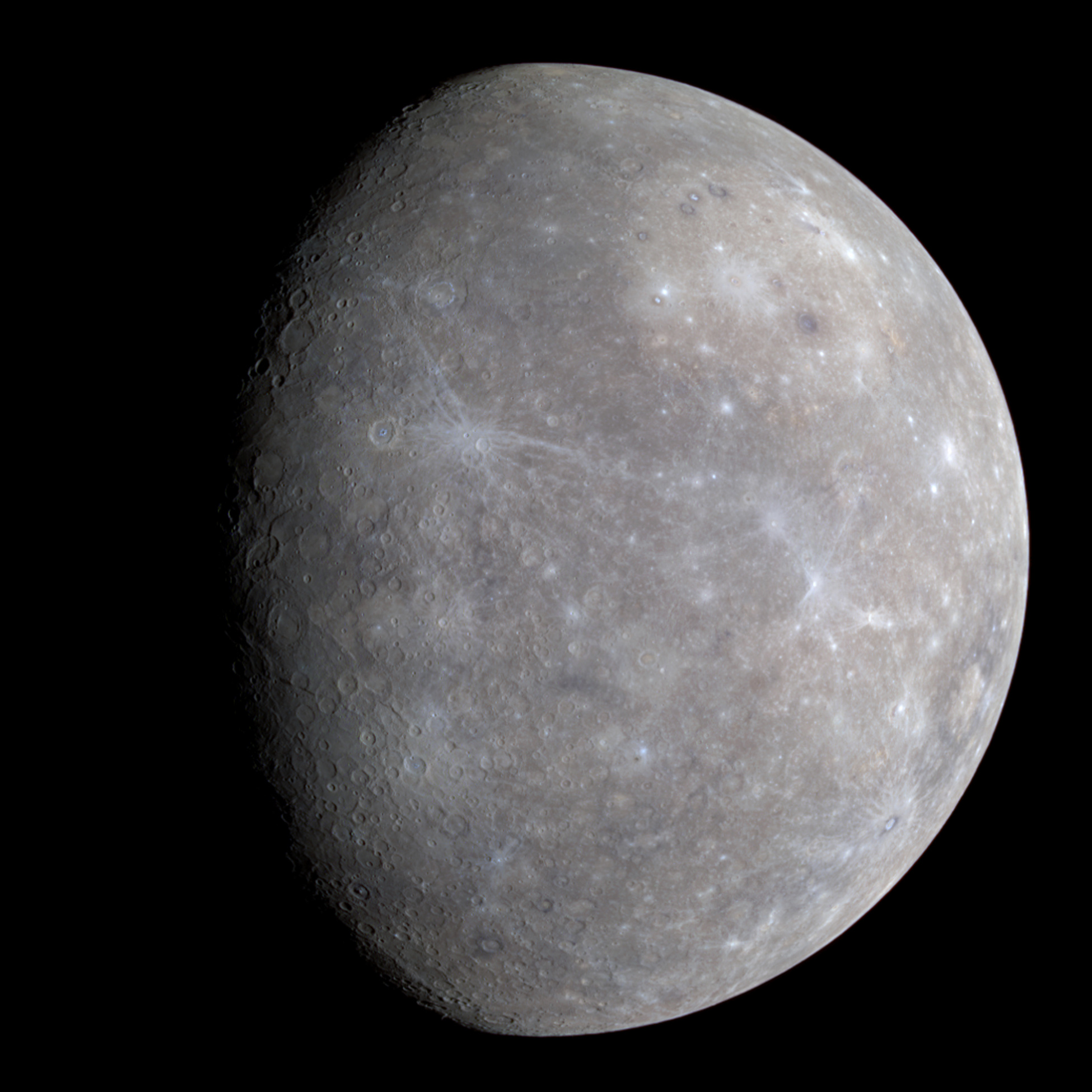
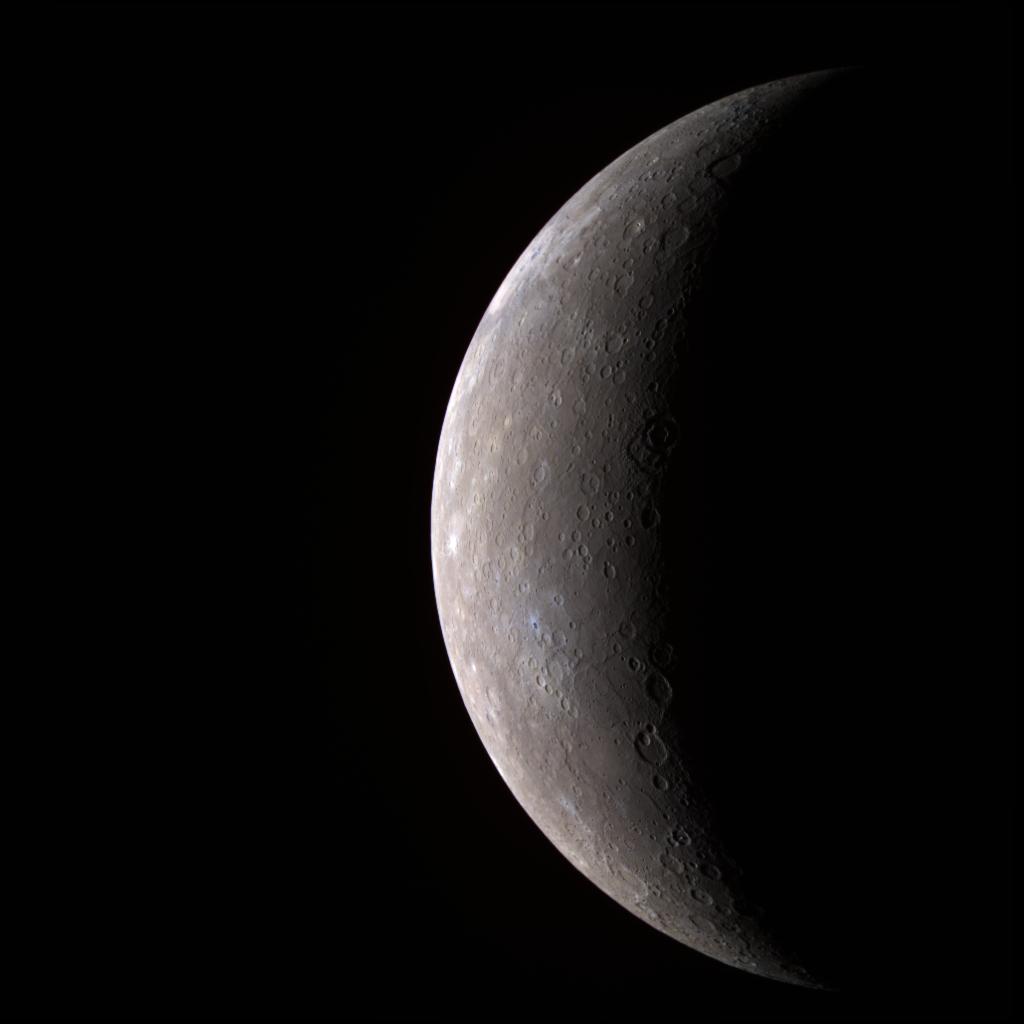
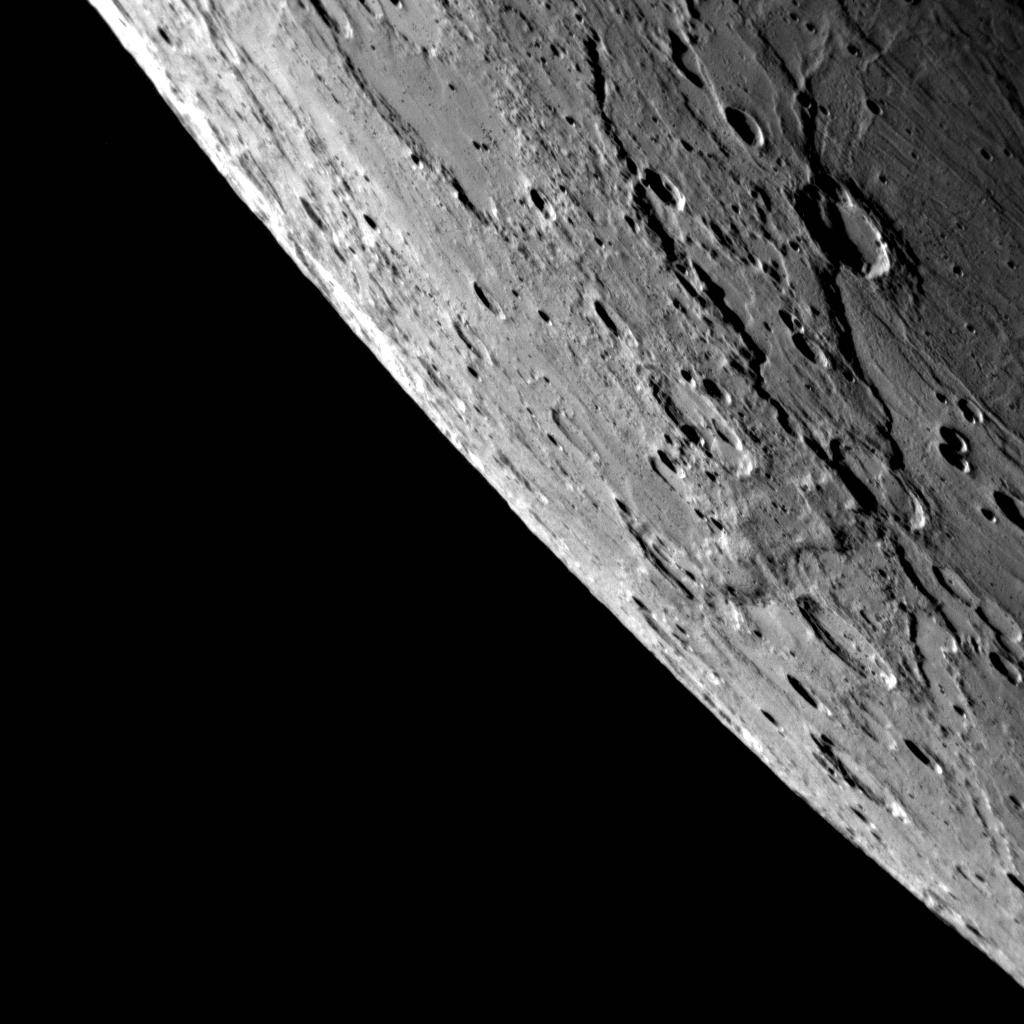


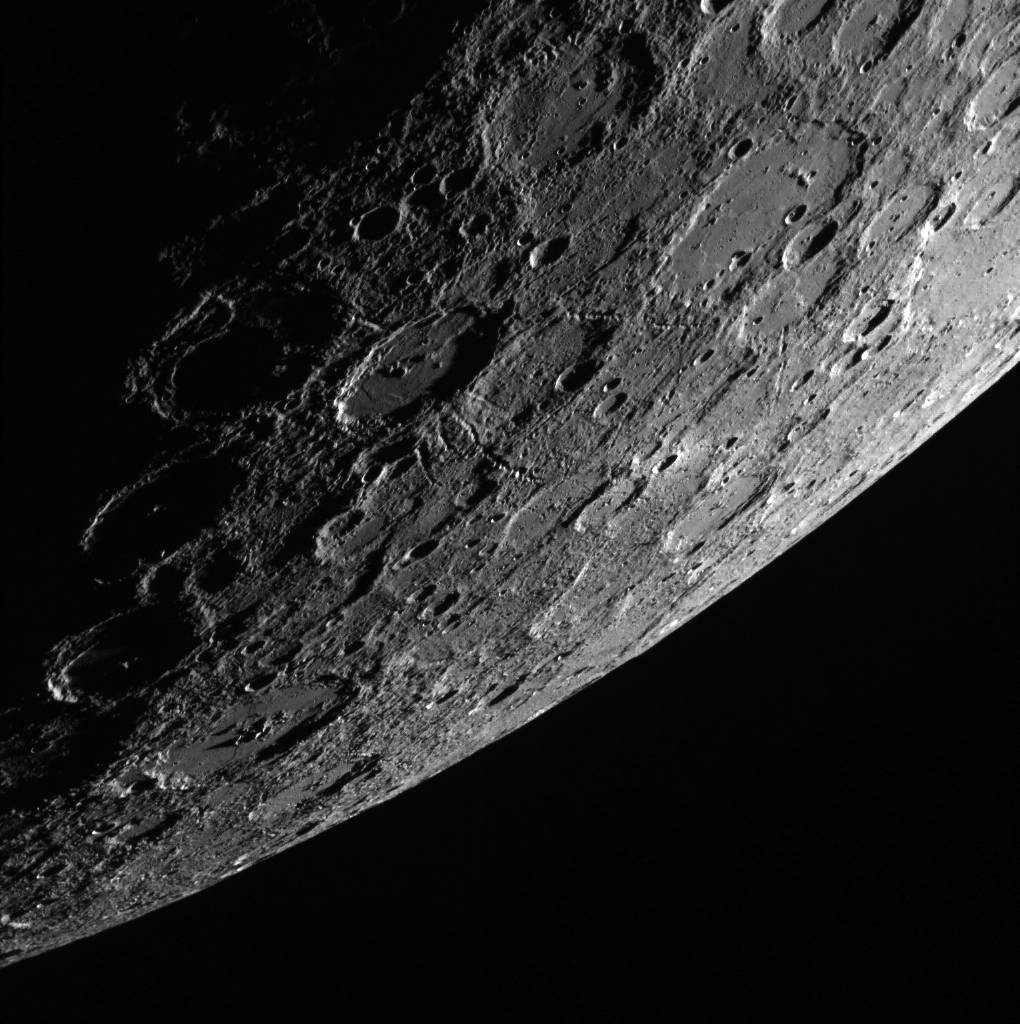
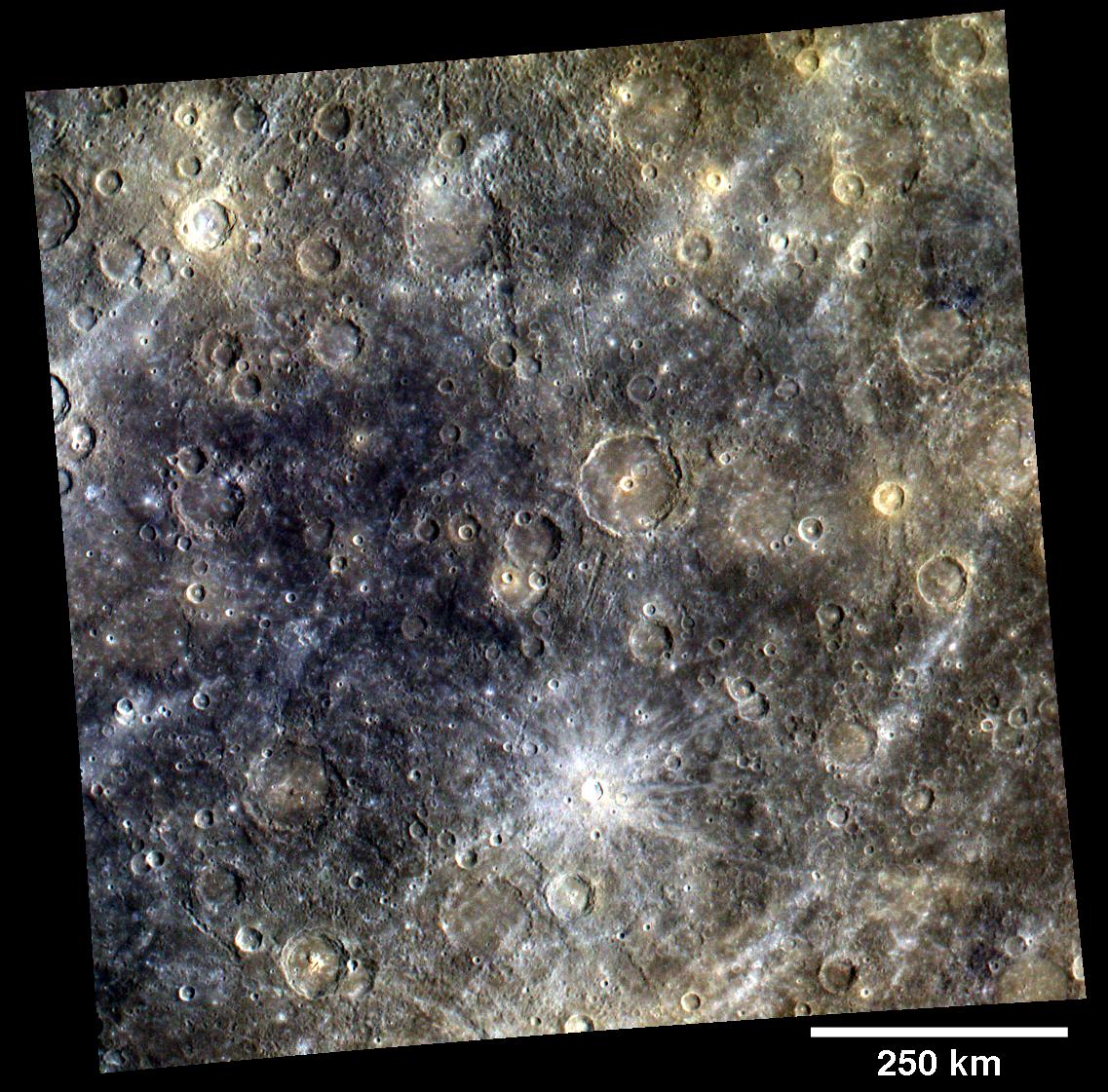
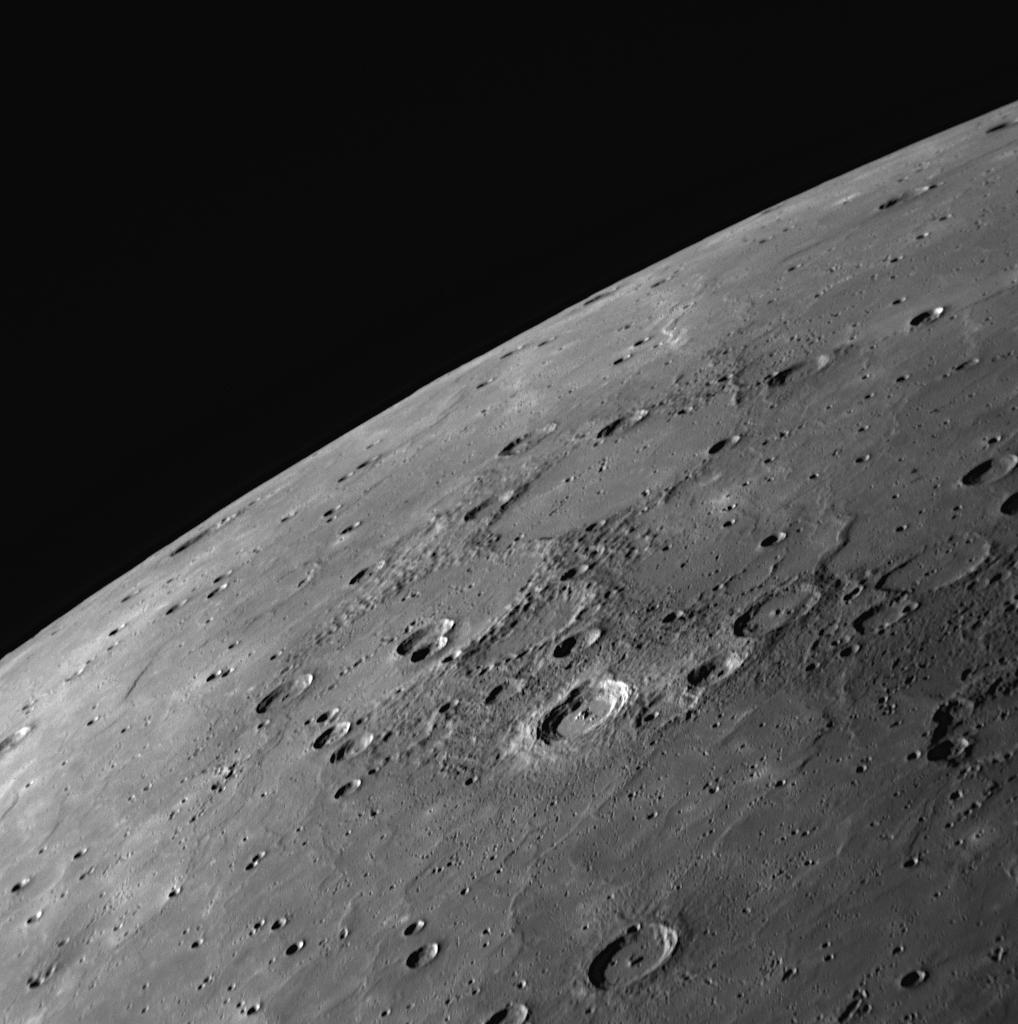
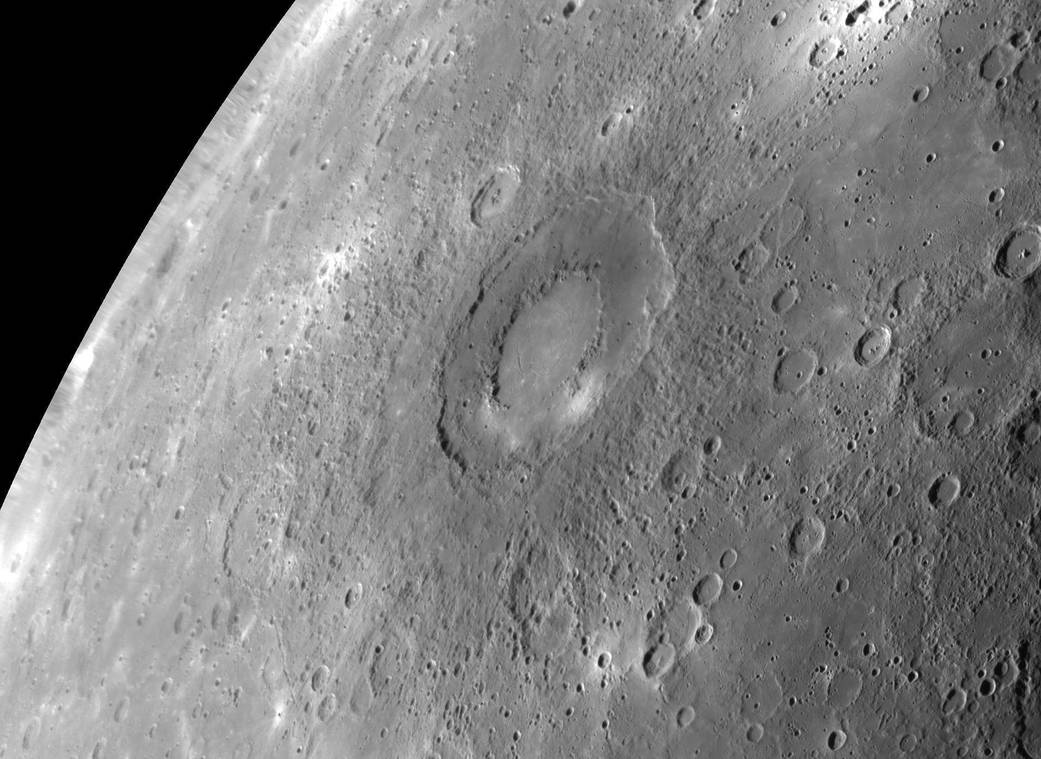
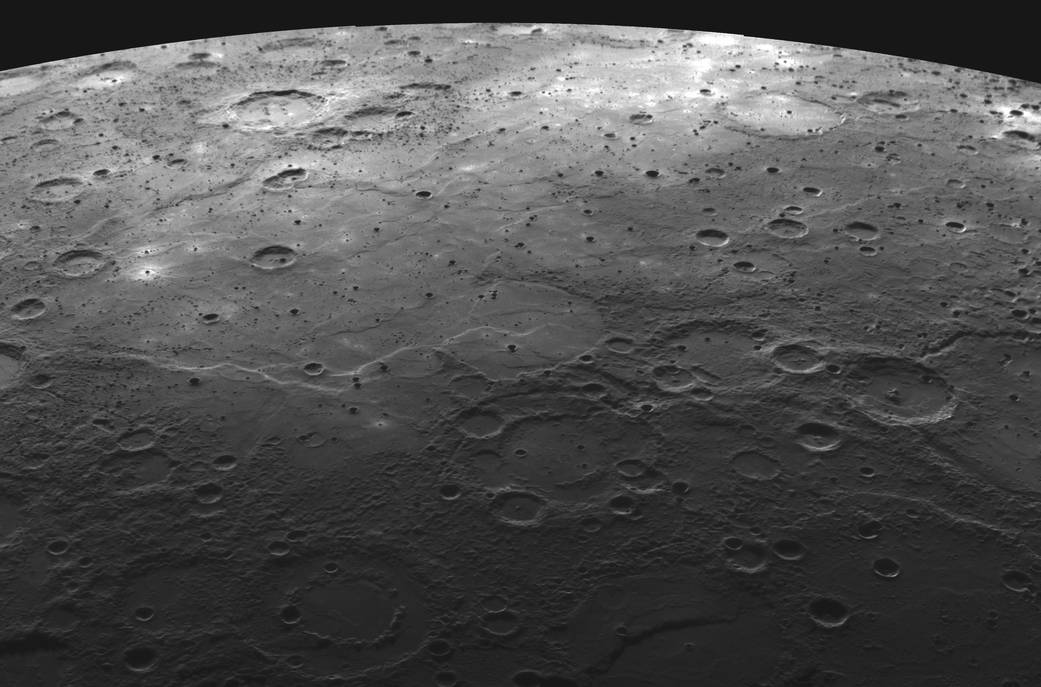
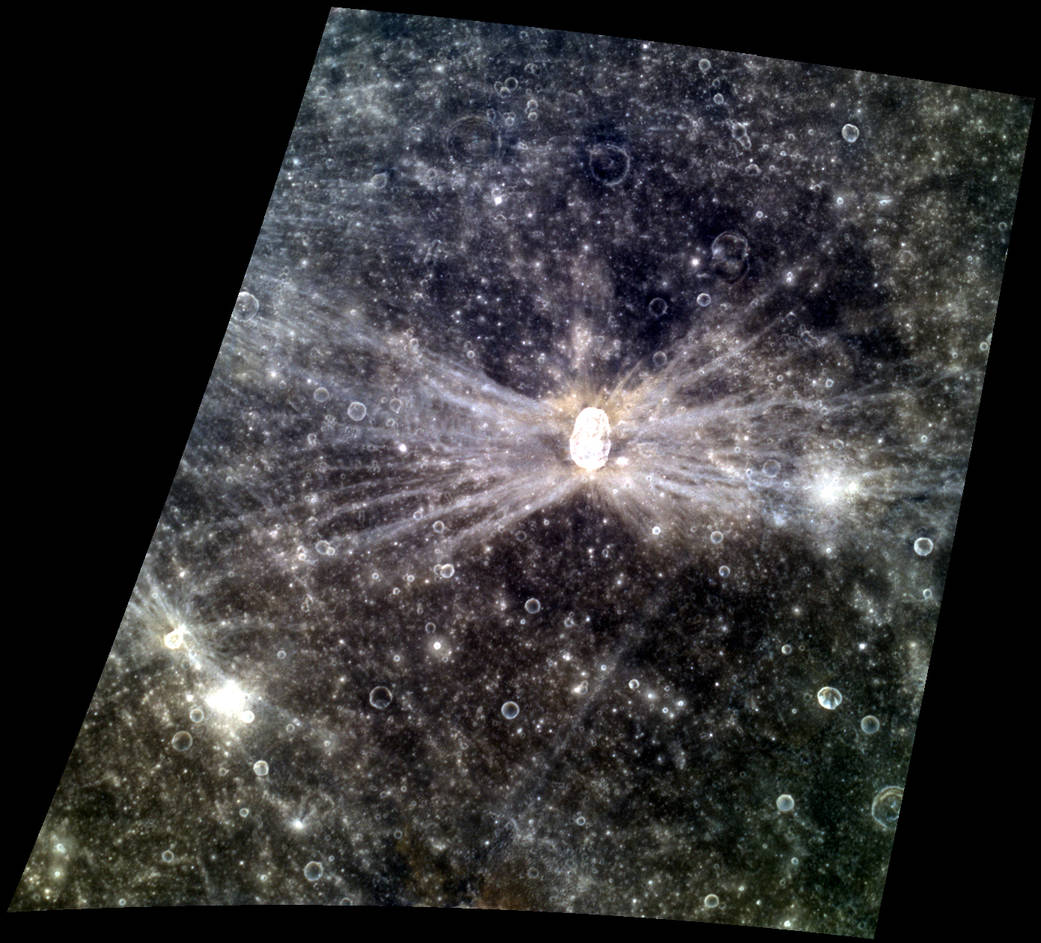
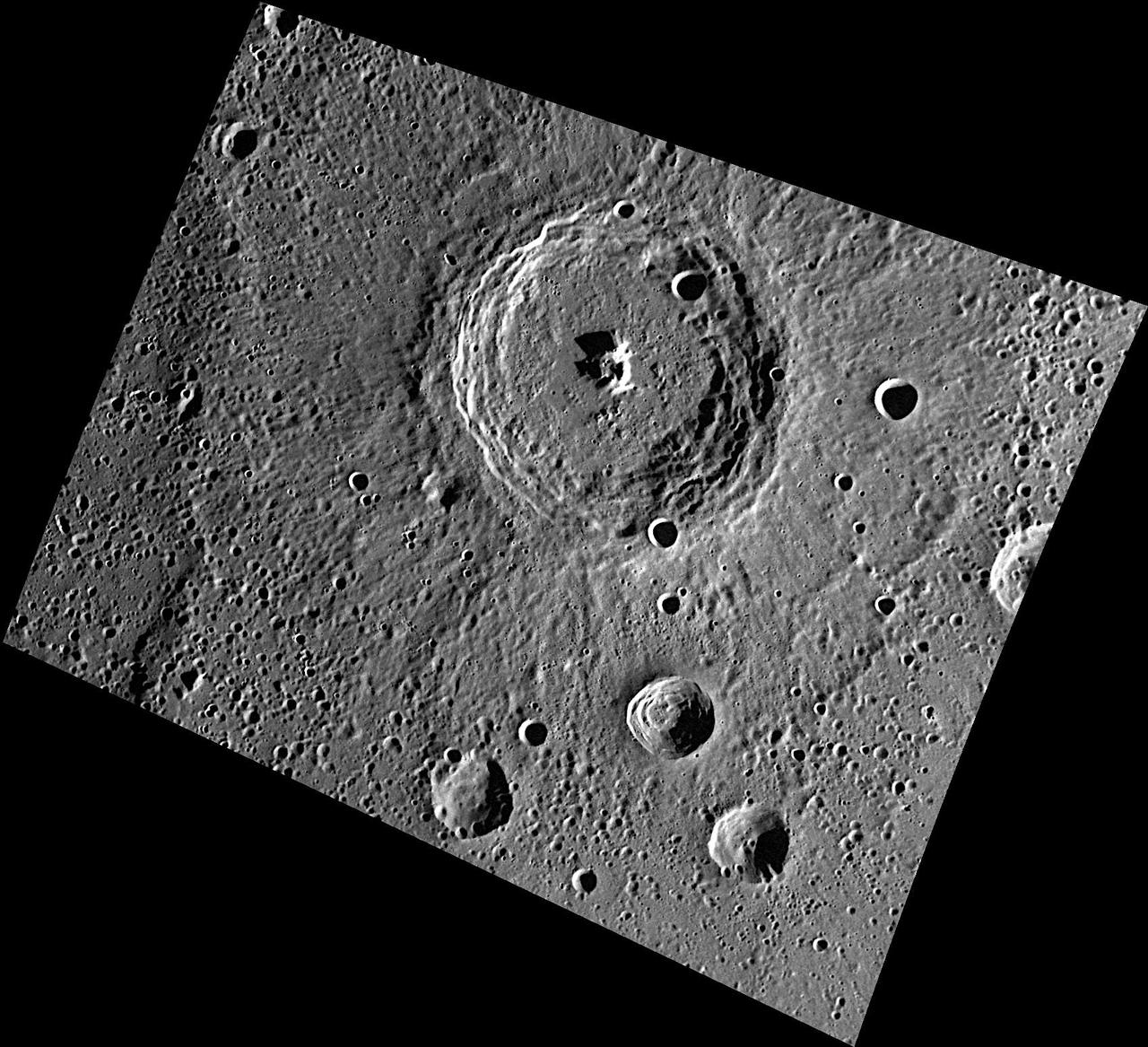
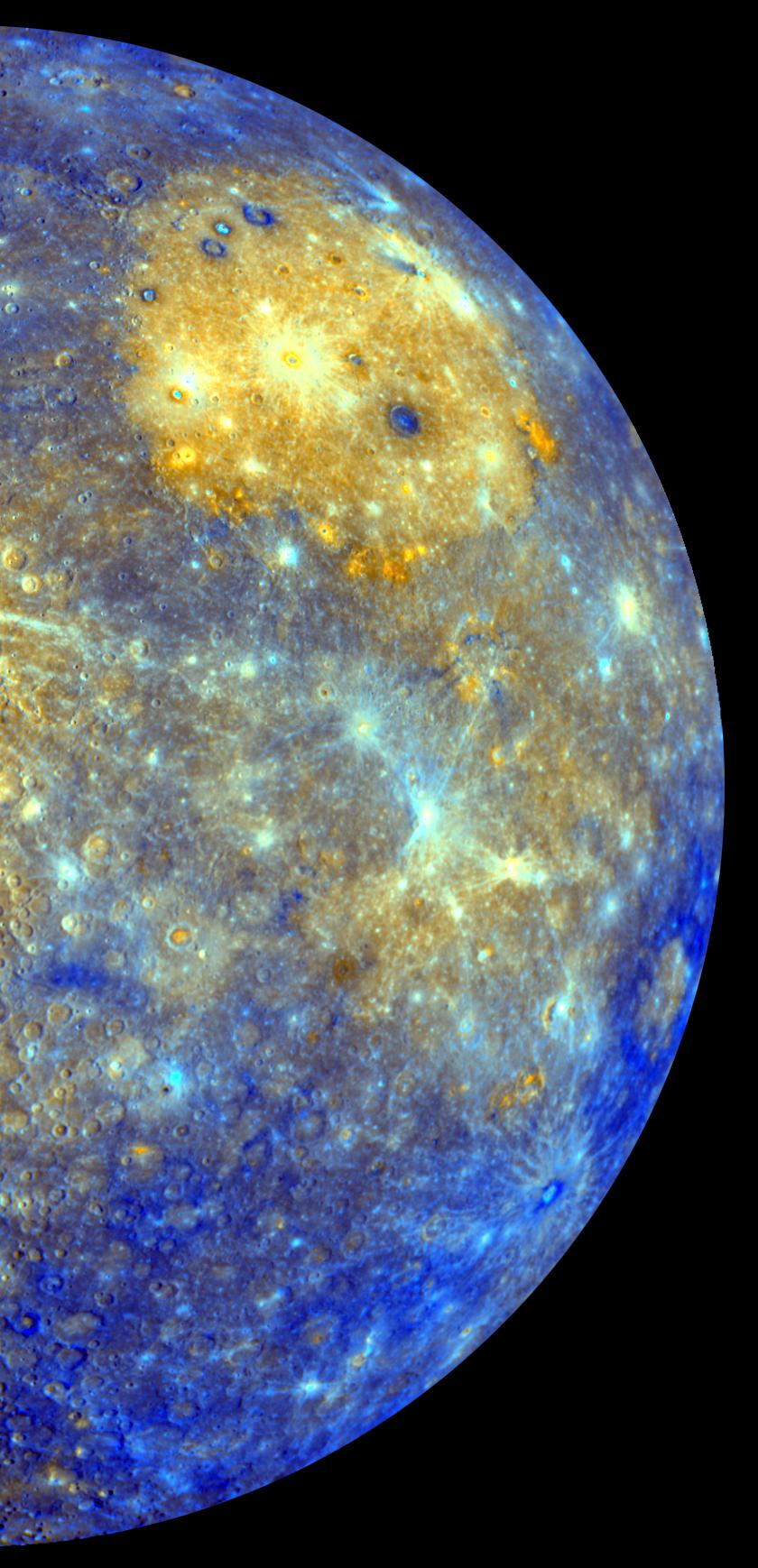
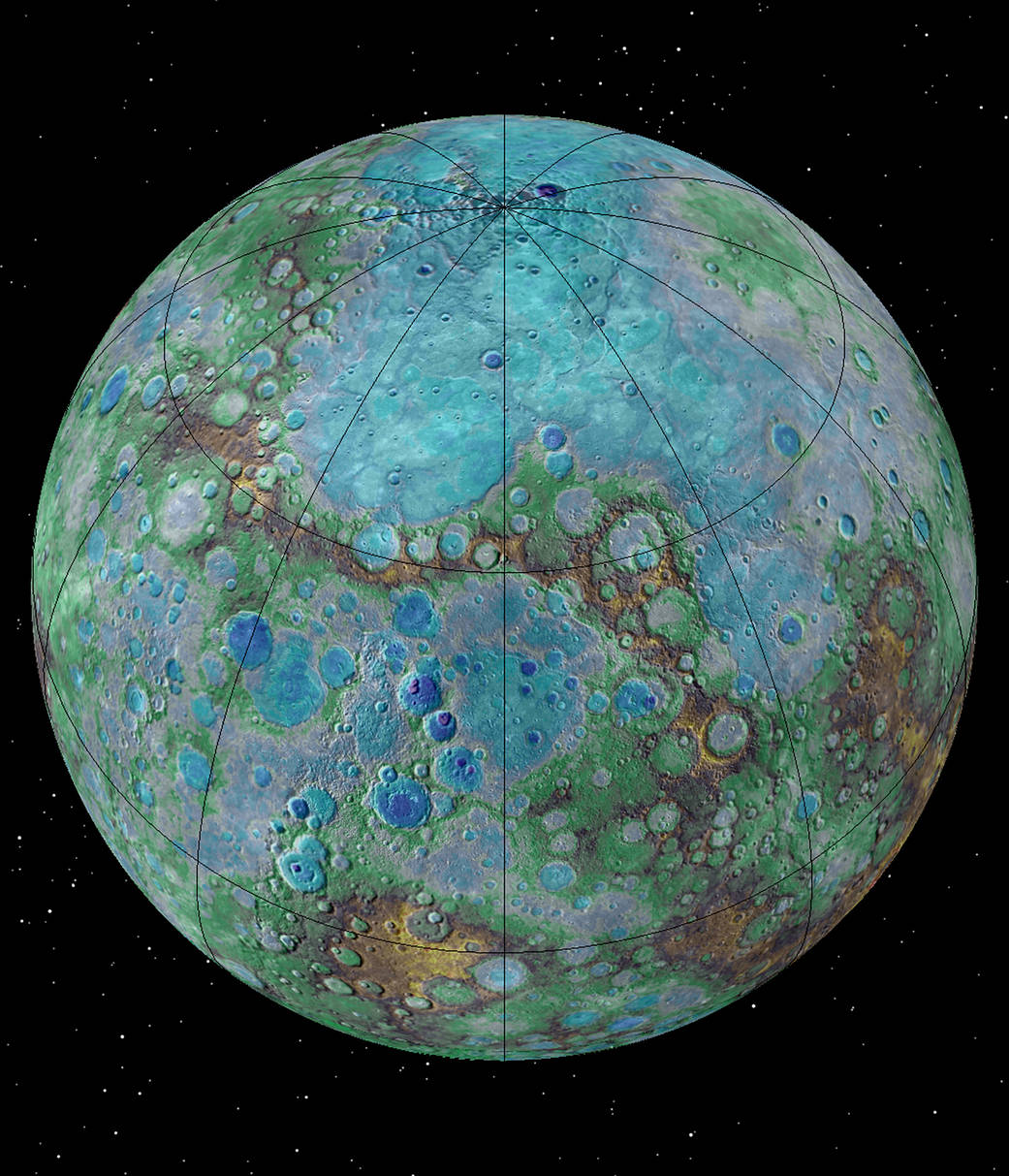
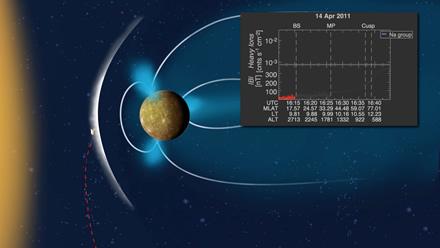
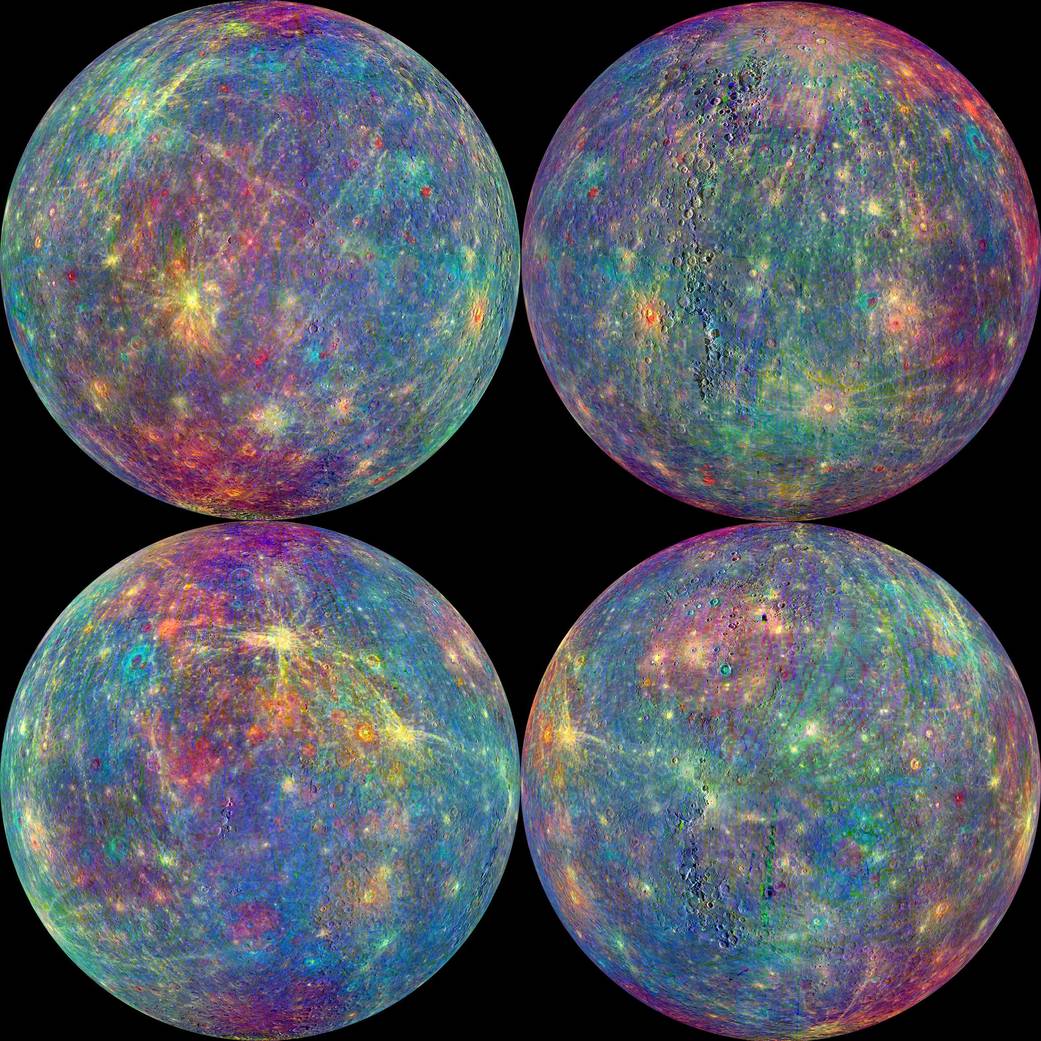
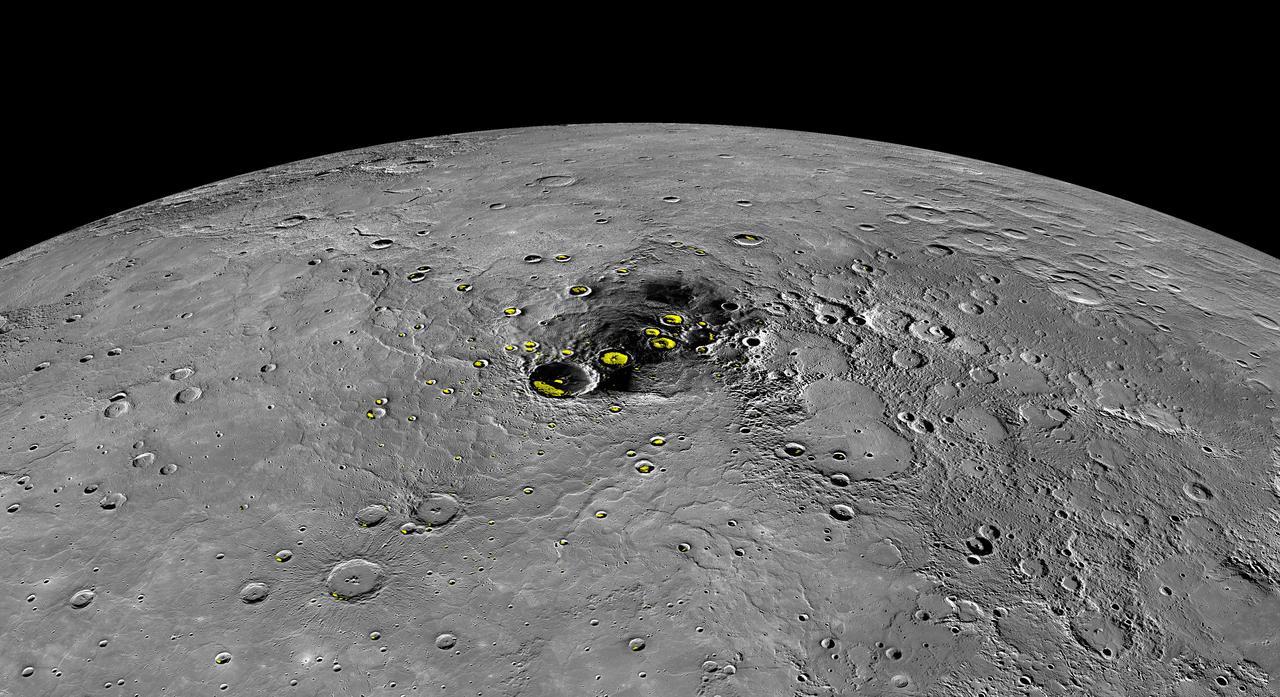
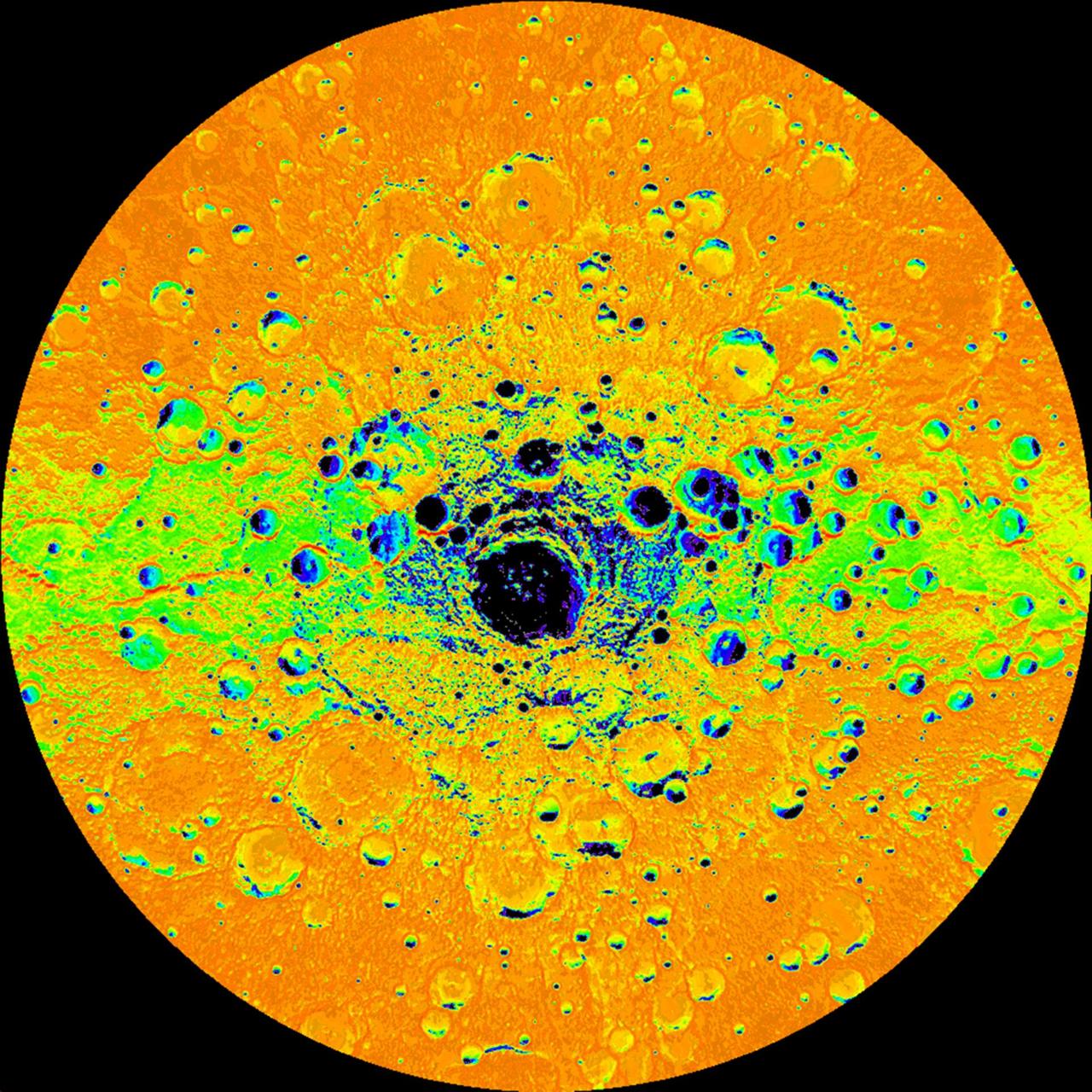
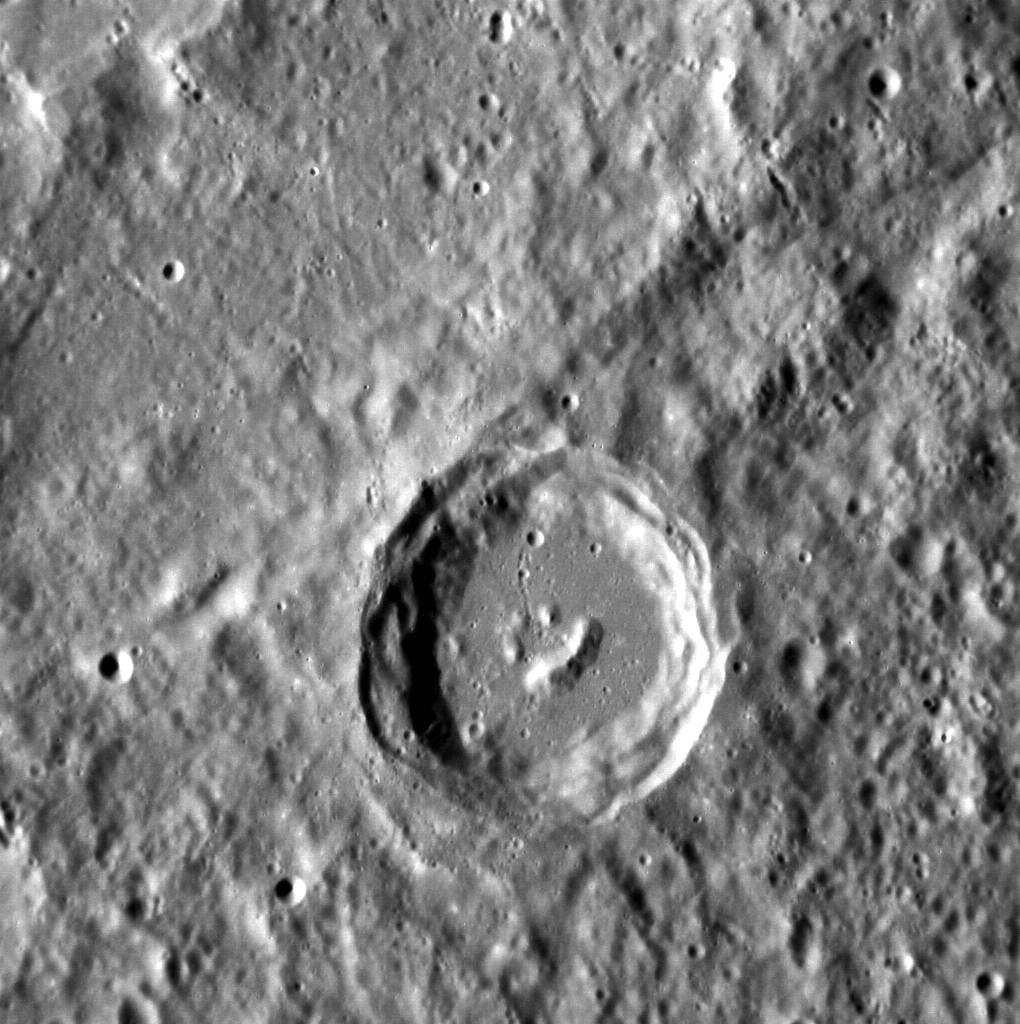
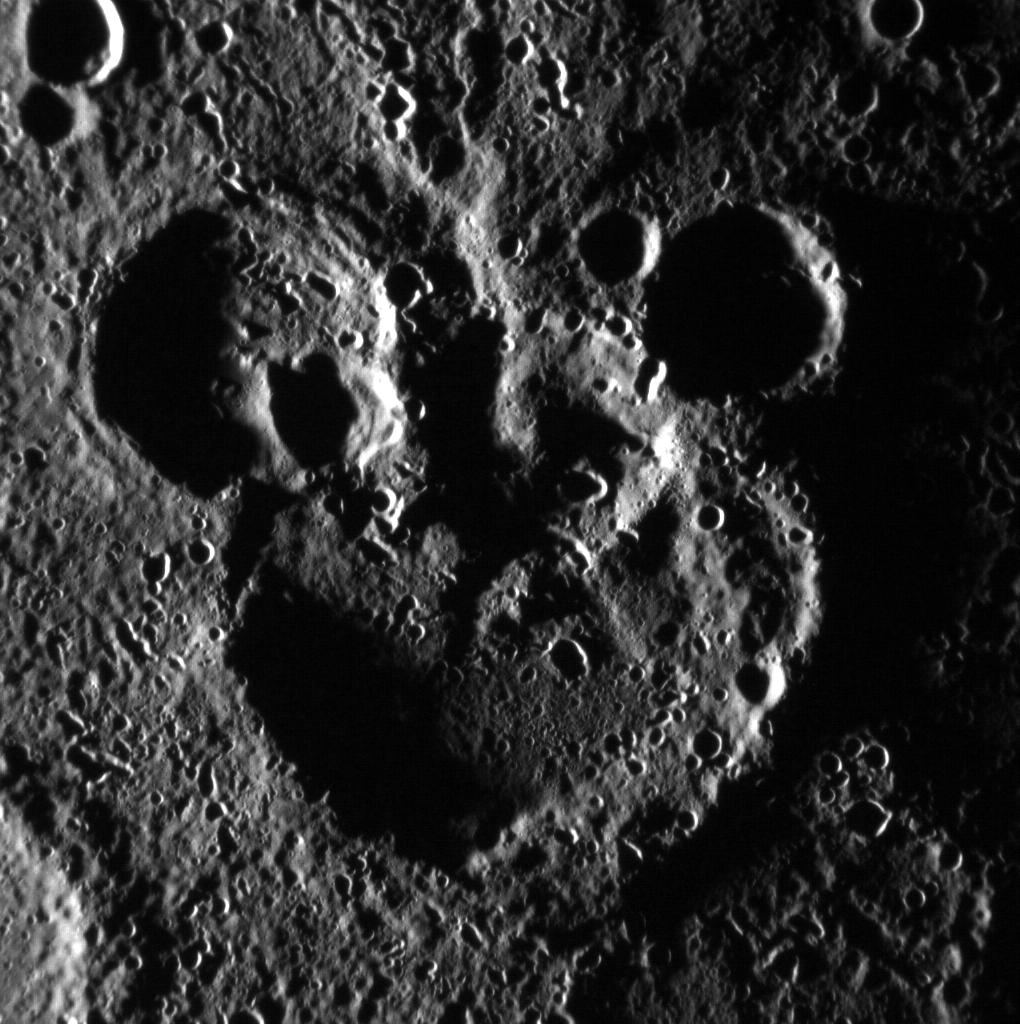
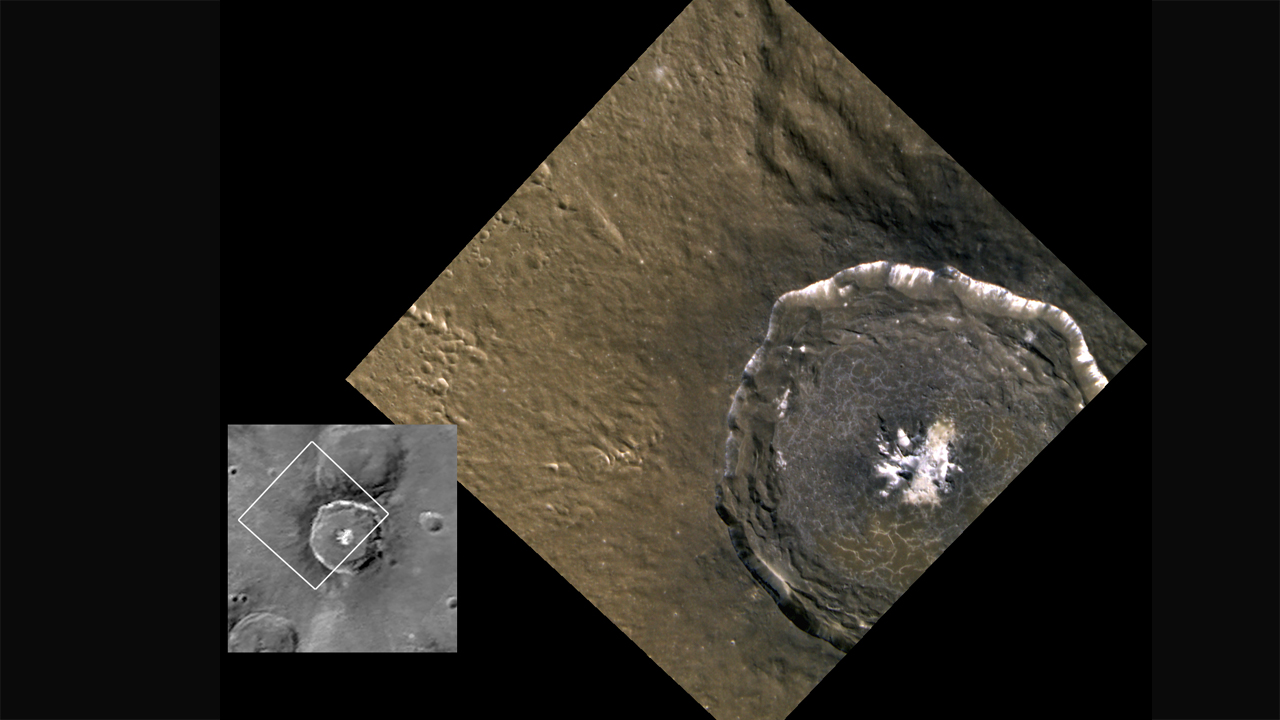
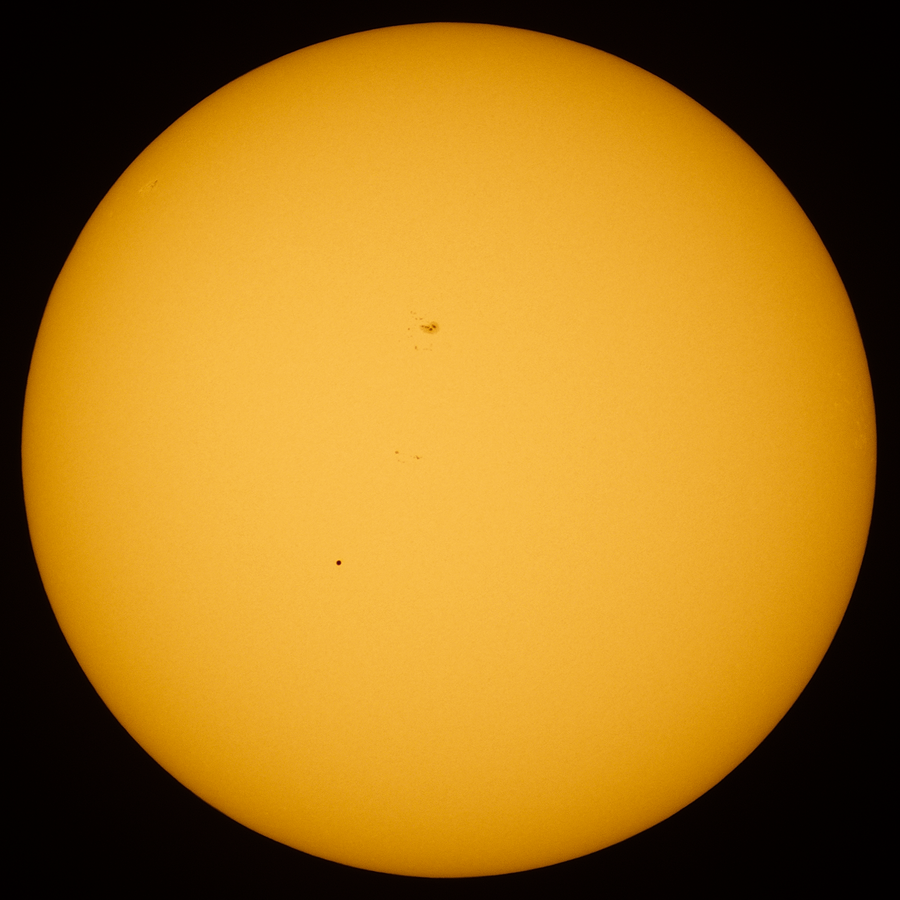
Mercury and Earth's Orbit
The Terrestrial Planets relative sizes
Mariner 10 Fly-bys
Composite Mercury
Approaching Mercury
Messenger arrives at Mercury
Messenger Scans
Mercury in Colour
Cresent Mercury
Mercury Flyby
Detailed Surface
Cratered Face
Cratered Surface
Surface in Color
Smooth Mercury
Rachmaninoff Crater
Craters
Hovnatanian crater
Mercury Crater
Mercury Art
Global Mercury
Mercury Weak Magnetics
Mercury In False Colour
Mercury Pole
Mercury Pole
Smiling Crater
Strange Craters
Degas Crater From Mariner 10 & Messenger
Transit Of Mercury

































